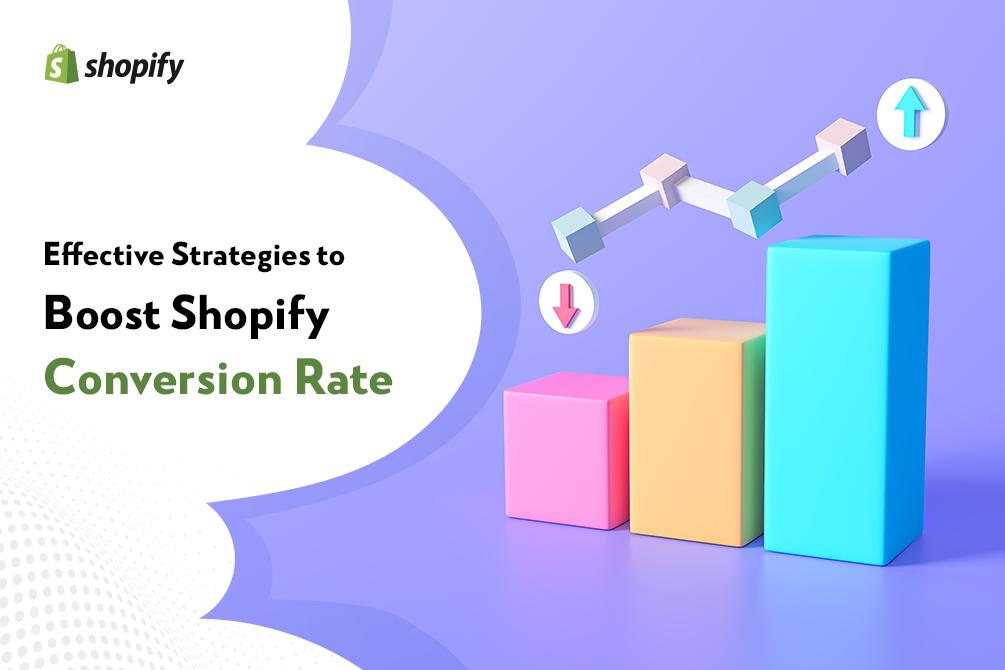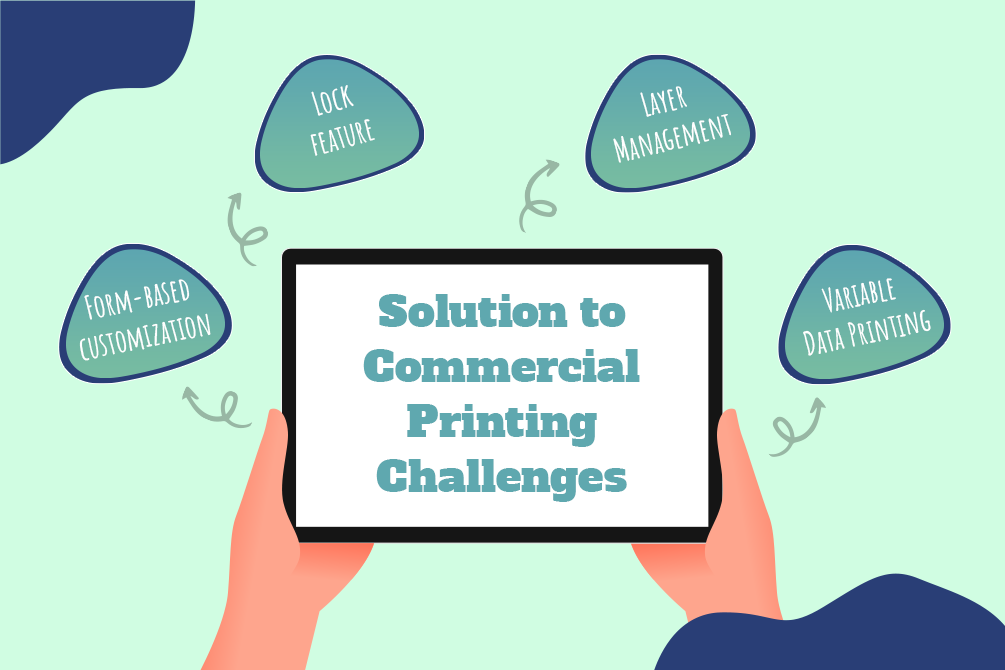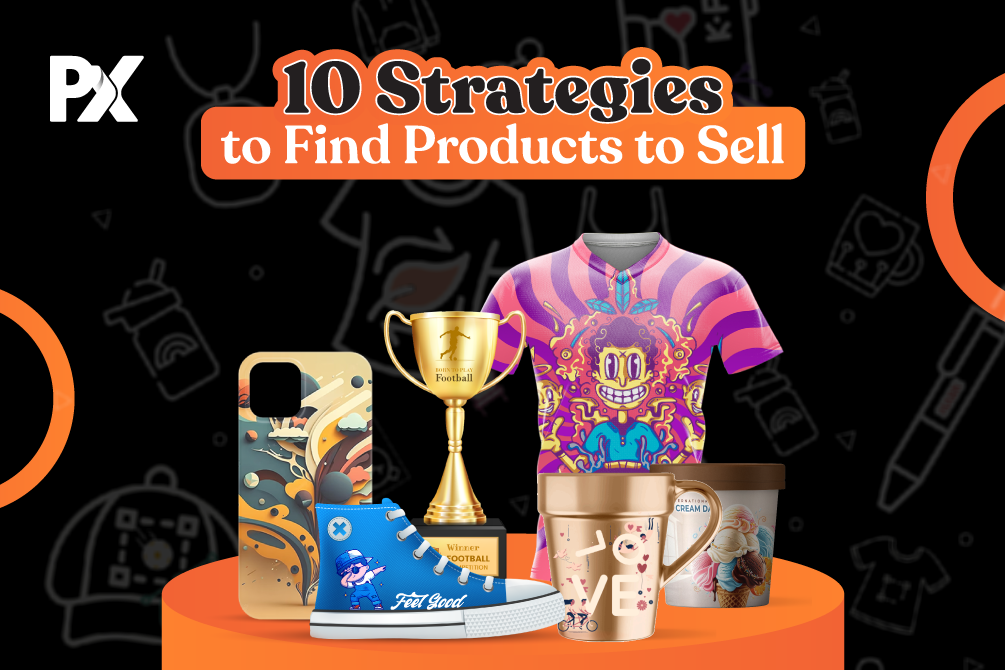Getting traffic on your Shopify store is easy.
Yep, really.
Clever promotion tactics, a couple of collaborations with influencers, some twists here and there by optimizing for search engines.
Though, what’s not easy is converting that traffic into paying customers.
As per a recent survey conducted by LittleData, the average conversion rate for Shopify is 1.5%.
How do you find out on what side of the spectrum your Shopify store falls?
The same study reveals…
Anything more than 3.3% puts you in the best 20% of Shopify stores, whereas anything less than 0.4% would put you in the worst 20%.
To optimize your Shopify store for high conversions, you need to always keep experimenting with different tactics that can help you drive results.
To begin with, here are five most important touchpoints that you need to consider if you are wondering how to improve your Shopify store.
A quick outline of how to increase conversion rate on Shopify:
- Your Product Page is the Chief – Optimize to Make More Sales
- Mobile is Too Big to Ignore – Ways to Increase Mobile Conversion Rate
- Improve Conversion Rate with Marketing & Deals
- A Smooth Journey from Add to Cart to Final Purchase
- Additional Point – Dabble into Other Revenue Streams
Your Product Page is the Chief – Optimize to Make More Sales
Let’s talk about the CRO audit checklist and fastest ways to improve conversion rate on your Shopify Store.
Your product page.
It’s often on this page that customers put a lot of thought into whether they really want to buy what you are offering.
Therefore, everything from easy categorization of products to image quality matters.
Shopify has hundreds of product page templates which I am sure you are already familiar with.
However, despite having chosen some of the most amazingly designed templates, if your customers are not making it to the checkout, here’s what can help you.
1. It’s all in the details: CTAs, description, and such
Audiences only like suspense in Agatha Christie’s books and The Conjuring Universe, not when they browse an eCommerce website.
A lot of times shoppers leave a store because they can not (easily) find the information they are looking for.
No customer likes to be on the edge wondering what benefits your products offer, where can they place an order from, etc.
Therefore, it is important to provide information – clear information about your business and products.
Well, I know you already have all the details mentioned on your website.
Perhaps you want to make the copy more appealing by focusing more on benefits rather than features of your products. Or maybe you can optimize the descriptions for organic search results to improve Shopify store.
When optimizing your product pages, call-to-action buttons are unmissable. Highlighting a clear call to action at a bang on place makes it easy for shoppers to find checkout.
2. Product tailored for each customer: Leverage product customization
Regardless of the products that you sell, shoppers have unique requirements. Not all of your customers want the same thing.
Failing to help shoppers find a product that perfectly fits their requirements is off-putting. It hardly takes them time to leave your store.
Hence, customization is what helps you serve each segment of customers individually. It drives conversions and boosts customer satisfaction.
From Nike to Netflix to Tesla, brands, both big and small are enabling product customization on their stores.
You can have a dedicated section where your customers can design their own products. They can use ready to design templates or customize from scratch.
At PrintXpand, we have worked with many Shopify merchants to help them integrate Product Design Tool.
Whether you sell apparel, accessories, promotional goods, or paper products, our tool equips you with all the features and functionality you need to deliver successful customization.
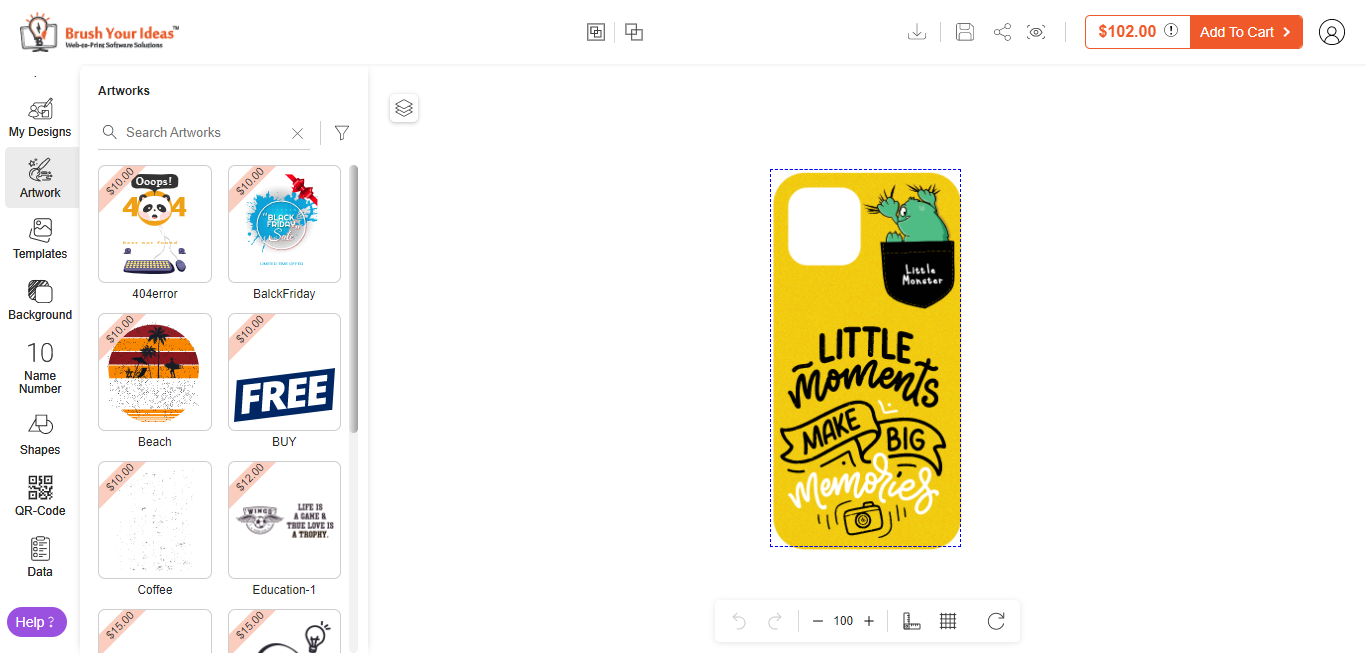
Our fully responsive tool can be easily integrated into the backend of your Shopify admin panel.
You can customize the theme of it to match your brand identity, and also enable or disable features based on your business logic.
Checkout the link below to know more details about Shopify Product Design Tool, and how it works!
3. Key Ingredients That Motivate Customers to Buy
Beyond price there are several things that help build trust and encourage customers to buy.
Let’s say a potential customer is intrigued by your product. But they are not 100% sure.
Now, here instead of forcing a sale, why not have your existing customers do some talking.
Thus come into picture social proofs. Customer review, testimonials, and ratings can go a long way in helping shoppers make a confident purchase.
Similar to reviews are the trust badges you put up on your store. Do you know 60% of customers don’t purchase simply because no trust badges were visible on the website?
If placed on the right page, they can significantly help boost conversions. To improve Shopify store, you can either install a free app or integrate badges via some code tweaking. A simpler option would be to incorporate video testimonials from satisfied customers who personally used your product or service as one of the introductory content on your website. Just make sure that the videos are professionally done yet authentic enough to convince potential customers.
Chatbots are another excellent way to boost conversions. You may have FAQs on your store, but chatbots give a more human touch to your business.
Some popular one click upsell Shopify apps on Shopify app store to leverage the chatbot functionality are Tidio and Gobot.
4. Take product visuals a step further: Add videos
Visuals always help better understand anything, don’t they?
Bullet points over lengthy description, interactive visuals over static images.
Having video content on your website can be attention-grabbing, and helps boost conversion. That’s what marketers say!
97% of them suggest that videos are great in helping the audience understand a product. While 76% believe they help in increasing sales.
There’s so much that you can do with videos – product demonstrations, testimonials, behind the scenes, lifestyle videos showing people using your product in daily lives, and such.
And it’s also really easy. You need not hire professionals.
You can easily create videos using the online video creator tool. It can be used to create high-quality videos for your business or personal projects. With a variety of features and templates, you can customize your videos to suit your specific needs and preferences.
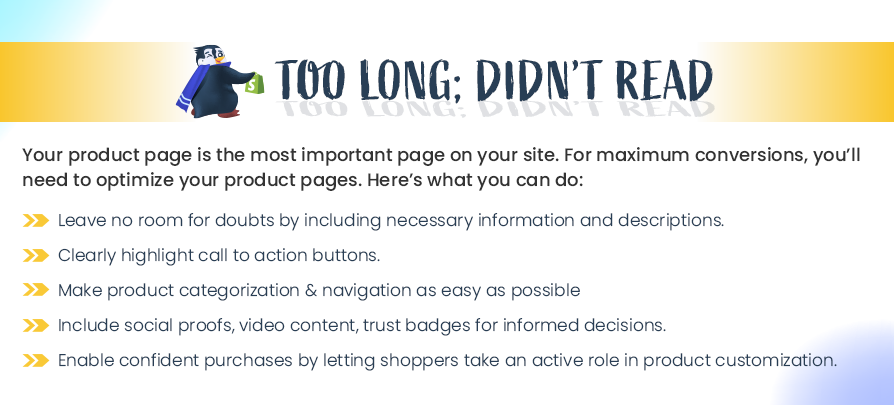
Mobile is Too Big to Ignore – Ways to Increase Mobile Conversion Rate
Mobile-friendly or mobile responsive is no longer a nice-to-have thing. It has become mandatory.
As per a study by OptiMonk, the average desktop popup conversion rate was 9.69%.
While…. Mobile popups converted at 11.07%!
Luckily, Shopify themes get automatically optimized for all devices. However, that’s not enough. You’ll need to update your Shopify store theme to make it up-to-date.
You can check whether or not your store is mobile-friendly using tools like Google Mobile-friendly Test.
Additionally, below are the most practical ways you can implement mobile conversion optimization. Mobile responsiveness is key for web accessibility, especially on Shopify. Investing in a Shopify accessibility app helps attract more customers and boost conversion rates by ensuring your store is accessible to people with disabilities.
5. Work on maximizing the speed
Both shoppers and Google love speed.
If your store takes more than 4 seconds to load, up goes the bounce rate and down the conversions.
I did not say this out of thin air. As per statistics, 64% of smartphone users expect pages to load in under four seconds.
To make things worse, Google considers page speed as one of the factors when ranking your website.
Now there are several factors that affect the speed of your Shopify store – images, browser cache, theme code, third-party libraries, and such.
It’s going to be a long process if you want to optimize your store for speed.
Shopify’s online store speed report can help you analyze different speed-checkers and get a detailed review.
There are also several free tools Like Page Speed Optimizer by Booster Apps available.
6. Adopt a mobile-first approach
Traditionally, websites are designed for desktop first and mobile later.
However, for satisfactory user experience, businesses have started adopting the mobile-first approach.
It seems quite a task to design in the reverse direction.
But if you are up for witnessing some great results in terms of UX and sales (which undoubtedly you are!), then let’s see how you can work on it to improve your Shopify Store.
Remove all the clutter. Seriously.
Invasive popups, content heavy descriptions, a lengthy purchase path, multiple CTAs. Tiny changes here and there will take you a long way.
At PrintXpand, we are rigorous in following a mobile-first approach. Our Product Customization tool is built with that very approach.
And that’s what helps users carry out a clutter-free customization process. There’s no guesswork or aimless scrolling when customizing a product.
If you sell print products like apparel, banners, bags, gifts, and such on your Shopify store, we insist that you take a personalized demo to experience how our Shopify Product Design Tool works!
Only then can you truly understand how an intuitive tool can help you grow your business!
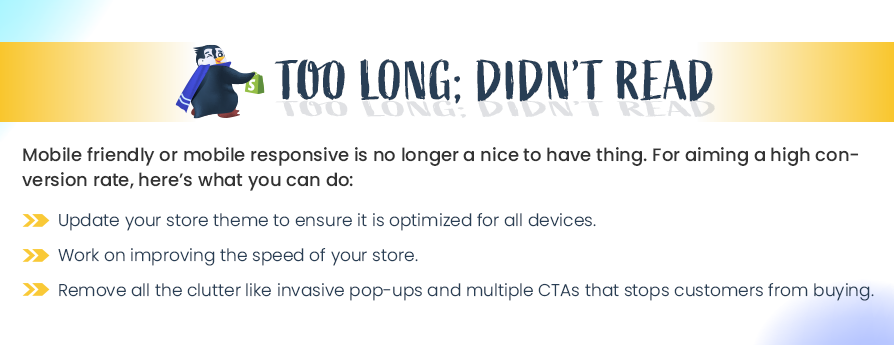
Improve Conversion Rate with Marketing & Deals
Emails, search engine optimization, social media will help you get traffic and followers – no big deal.
However, more than attracting shoppers, what you need at this point is to convince them to make a purchase.
So here’s a list of a few sureshot marketing strategies that can help boost sales.
7. Remarket to users who have already visited your store
Recent visitors, first-time visitors, cart abandoners – retargeting audiences at the right time with the right message can help you get them back.
Simply put, remarketing works as a reminder.
A shopper came to your website and saw your stuff. Then they start seeing ads of your products on other pages they browse.
Once you have their attention, they get back to your website, this time more confident to move forward with the purchase.
If your website has more than 100 visitors monthly, you can leverage remarketing. However, it is a long-term process, and you ought to invest in every campaign you run.
One solution is to craft efficient customer retention. Deliver such an exceptional CX, that customers are willing to pay.
8. Work on customer retention to aid all the marketing efforts you put
While there are various ways like loyalty programs, emails, and such to enhance customer retention, nothing is hardly more impactful than a personalized shopping experience.
How many generic business emails do you click? But if there’s a message crafted to your specific interest, you might want to click.
Apply the same thing here. Evaluate every step of the buying process to make each customer feel special.
It could be a personalized style guide, relevant product recommendations, tailored messages, cross-selling & upselling, and such.
Boost conversions by delivering a personalized shopping experience. See how product personalization can help tailor unique experiences.
9. Sell on social media platforms
Social commerce is a model that might be in the infant stages but it is going to power the future of shopping for years to come.
The reason being our insane obsession with social media platforms.
If your brand already has a Facebook page or an Instagram account, you can set up a Facebook Shop or enable Instagram Shopping.
With Shopify, it becomes very easy to set up a shoppable Instagram feed where you link each post to a specific product page.
So, customers who find your tagged products on Instagram, they can tap to view and buy that product on your Shopify store.
It is an easy and a quick way to capitalize on your social media traffic and increase brand sales with shoppable feed.
10. Attention-grabbing offers to convince customers
Who doesn’t like a little discount or some free stuff!
Contests, giveaways, product bundles, discounts, loyalty programs are some common ways to convince shoppers to immediately make a purchase.
However, offers and discounts are not as easy as they look. It is very natural for shoppers to overlook your offer because every other store on the internet does that.
Hence, triggering FOMO and a sense of urgency is a powerful way to drive conversions and sales. Things like Only 5 products left in stock countdown can help you build urgency.
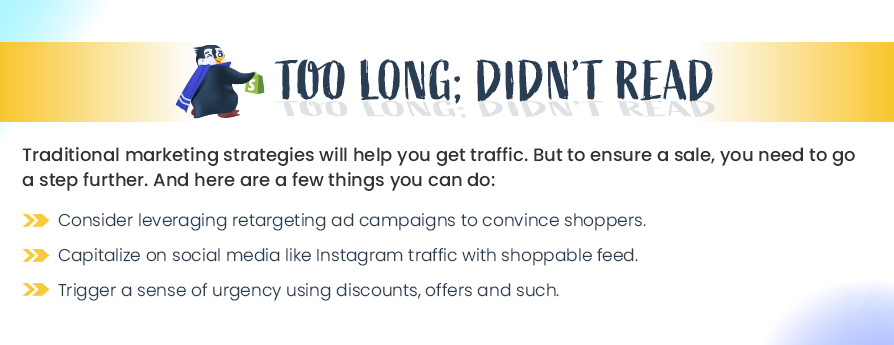
A Smooth Journey from Add to Cart to Final Purchase
Oftentimes shoppers are interested in what you sell, and hence they add a product to the cart.
That’s it. No progress happens after that. For weeks if not for months, there is no sale per se.
Does this sound familiar to you? A lot of entrepreneurs dread this situation.
A staggering average of 69% of online carts is being abandoned by users.
The solution to this problem is pretty straightforward. It lies in addressing the ‘why’ of people abandoning their carts. And for that, you’ll need to…
11. Optimize the checkout process
‘Create an account’.
I know it sounds tempting to have your customers create their account before they place an order. But it might be the very reason why you see no sales.
Being forced to create an account is the second most important reason why shoppers abandon their carts. So, maybe you want to make some modifications here.
Single page checkout has become increasingly popular. As opposed to a multi-step process, your customers can get done with purchase as quickly as possible.
There are apps available on Shopify store which you can use to enable 1 click checkout!
Shipping costs is another reason why shoppers leave without buying your product. As a customer myself, I have avoided buying products with expensive shipping costs.
Now ideally, I, including 40% of online shoppers, will care the most about free shipping. But let’s have a fair discussion that works for you.
You can consider cutting down on costs to make shipping more affordable. With Shopify Shipping, you get the confidence you need about what you charge customers for shipping.
12. Use variety of payment methods
In an age where customers demand experiences that are swifter and more convenient, multiple payments can help you boost conversions.
By providing various options, you can reduce the chances of shoppers abandoning carts owing to not enough payment options.
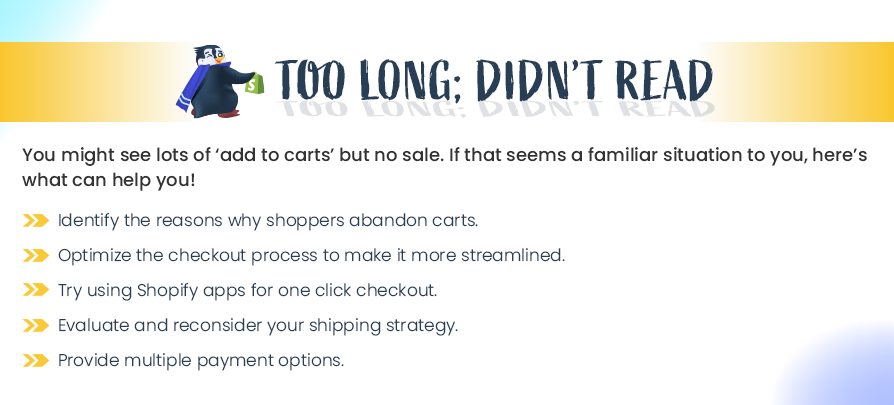
Additional Point – Dabble into Other Revenue Streams
Strategic partnerships, subscriptions, advertisements are some obvious ways to generate revenue. But do you know what is one of the fastest growing models?
It’s an online marketplace. They are gaining rage and present an irresistible popularity.
That’s why businesses are not only selling their products on the marketplace but also considering developing their own multi-vendor platform.
Think of the kind of business expansion and growth you can witness using the marketplace model. With every interaction or exchange that happens on your platform, you earn a commission!
While B2B and B2C are the most common types, the C2C model like Etsy seems to be pretty promising.
Shopify + PrintXpand: Get Ready to Grow Your Store!
Unabashedly doing a marketing gig here, but honestly, we truly aim to help you grow your Shopify store and improve your conversions.
For more than 15 years, we have been helping Shopify merchants achieve their goals by taking advantage of product customization.
By integrating our Product Design Tool, businesses have improved customer retention, reduced manual work, and bagged in more conversions.
While most of the part of successful customization does lie in the rich features, it’s our firm focus on the UI and UX of the tool that does all the work.
Built for every customer (average or a tech geek) coming to your store and for every device a user might be shopping on, you can deliver a seamless experience.
You will only be able to believe and deeply understand how our product works by taking a personalized demo!
Share your requirements with us, and our team will conduct a product tour tailored to the industry you cater to, and the kind of products you sell.
All product and company names are trademarks™, registered® or copyright© trademarks of their respective holders. Use of them does not imply any affiliation with or endorsement by them.
